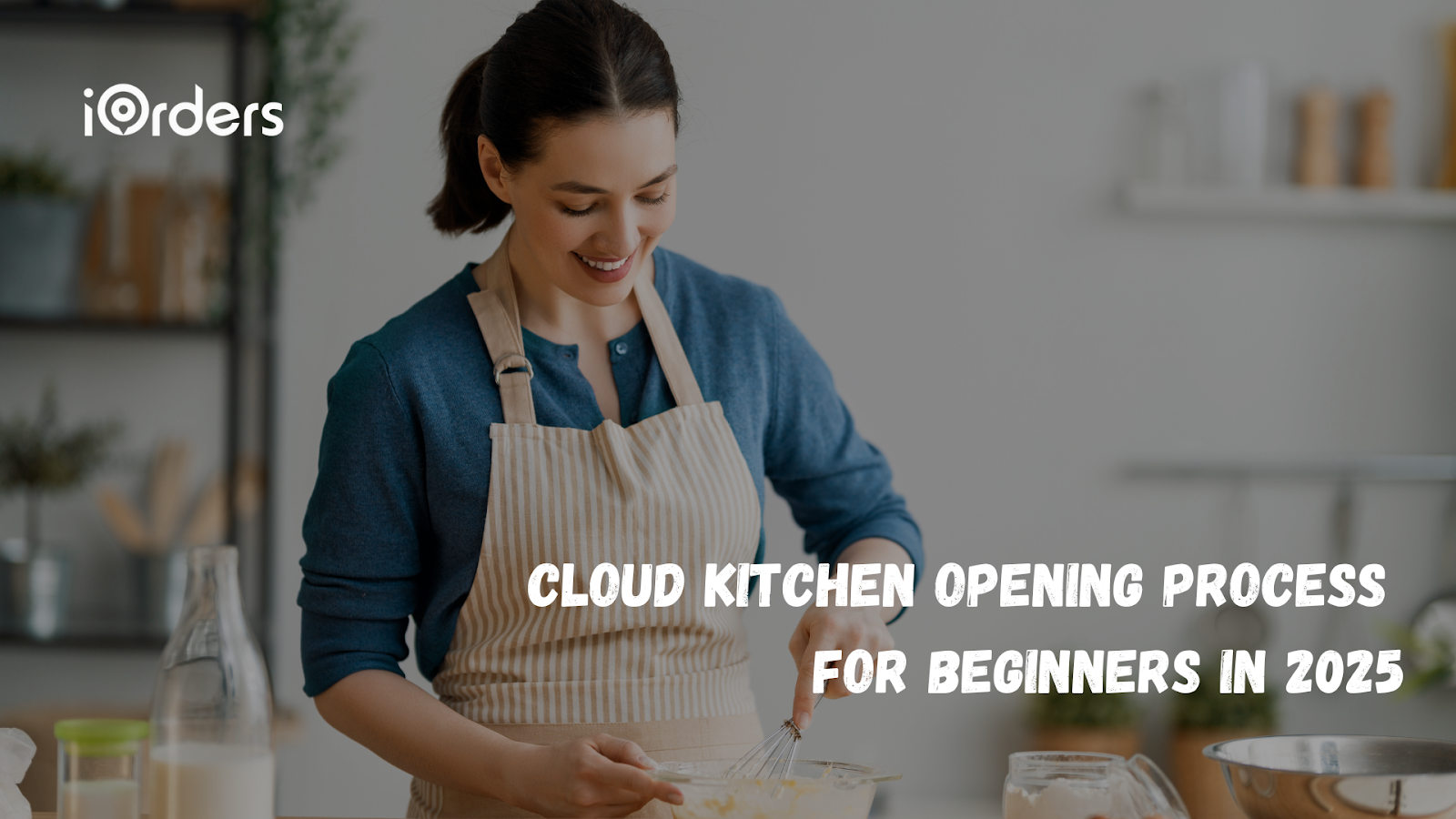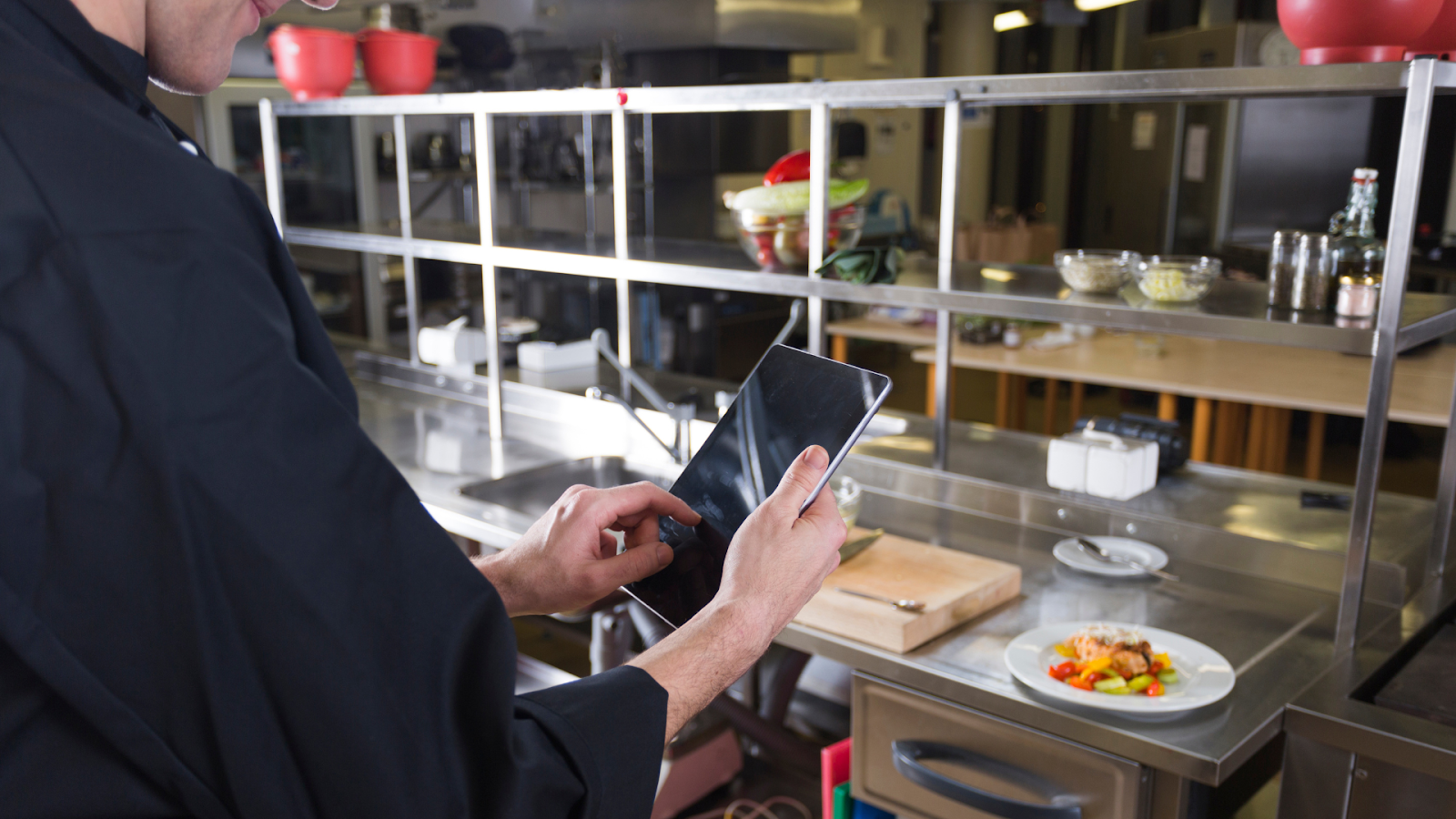July 18, 2025

Are you stuck on how to start a cloud kitchen from home in 2025? Still dreaming of launching your own food business without the high overhead of a traditional restaurant? The cloud kitchen opening process might be easier than you think.
With more people ordering in, delivery-first models are soaring this year. In fact, the revenue from the Canadian online food delivery market is projected to reach $19.96 billion by 2030 (Statista, May 2025). The scenario presents a golden opportunity for aspiring chefs and entrepreneurs.
In 2025, many new chefs will utilize clear steps, strong branding, and low-cost technology to launch their businesses. In Canada, 77% of restaurants now spend more time implementing technology than they did last year. The trend will only grow.
In this guide, you will learn the full cloud kitchen opening process, from idea to launch. You'll also have impactful strategies and practical tools to maximize profitability and simplify your operations. Get ready to turn your culinary vision into a thriving delivery-first business.
A cloud kitchen is a delivery-only kitchen with no dine-in space. You prepare food just like any restaurant, but sell it online through apps or your website. Customers order via delivery platforms, and your team cooks and packs the meals for dispatch.
It's also called a ghost kitchen, virtual kitchen, or dark kitchen. Many brands use cloud kitchens to test new menus or reach areas without opening full restaurants. Some cloud kitchens host multiple brands under one roof to maximize space and staff use.
Cloud kitchens offer lower startup and operational costs compared to traditional restaurants. They focus on speed, packaging quality, and digital marketing to attract customers and provide unmatched flexibility and scalability, letting you expand into new areas or launch new brands quickly without big investments in decor or front-of-house staff.

In 2025, cloud kitchens make more sense than ever.
First, consumer habits are changing. In Canada, 51% of DoorDash users order food monthly, and 66% prefer takeout. Even late-night orders between 12 am and 5 am are growing exponentially by 36%. That's a huge opportunity during non-peak hours, especially if you're exploring the cloud kitchen opening process from home.
Second, you can start with lower costs. You don't need dine-in space or pricey real estate. You can run multiple virtual brands under one roof. In Canada, the cloud kitchen market is set to exceed $2 billion in the next few years.
As of 2024, revenue Canada-wide for food service and drinking places increased by 4.1% from the previous year. Victoria has 4.6 restaurants per 1,000 residents, the highest per capita in the country.
This powerful combination of changing consumer behavior, reduced financial barriers, and unparalleled operational flexibility firmly establishes cloud kitchens as the future of the food industry.
Ready to capitalize on this boom? Next, we'll guide you through the cloud kitchen opening process, from start to launch.

Opening a cloud kitchen needs planning, setup, and smart decisions. You're not just cooking; you're building a system that runs smoothly, saves money, and keeps customers coming back. Whether you're starting fresh or scaling from a side hustle, the right process keeps you focused.
Here's a step-by-step guide to start your cloud kitchen:
In 2025, Canada's delivery-first dining is booming, with 54% of consumers preferring to order food delivery through websites or third-party apps. Customers want quick service at home, and the cloud kitchen model fits that demand. But before getting in, you need to know your options.
Here are the six most common cloud kitchen business models:
Each model works differently in terms of cost, control, and scale. Your selection should align with your budget and goals.
Before investing a dollar, you need to know what people are actually ordering in your area. Market research helps you avoid guesswork and make smarter choices.
Start by checking demand in your city. Look at what's trending on Google Trends or track popular items on Uber Eats and DoorDash. You can also run quick surveys to gather real insights:
Study your competition. What are other cloud kitchens offering? Are they missing something, like a late-night menu or gluten-free options?
Once you understand demand, choose your niche. It could be anything from vegan bowls and comfort food to Korean BBQ or Indian curries. Pick what you can execute well and what people actually want.
Next, define your ideal customer by age, habits, and budget. Are they students ordering at midnight or office workers looking for healthy lunch options? It will help you establish your niche and target audience.
Picking the right setup early on can save you money and time later. Begin by understanding which kitchen and delivery model best aligns with your goals.
✅Single Brand vs. Multi-Brand
A single-brand kitchen is focused, easier to manage, and builds trust faster. It works well if you're starting with one cuisine or concept.
A multi-brand kitchen operates different menus from a single space, offering options such as burgers, pizzas, and salads under various names. It's more complex, but it can reach a wider audience.
✅Own Delivery vs. Aggregators vs. Hybrid
Aggregator-based delivery (like Uber Eats or DoorDash) provides instant visibility, but it comes with high commissions.
Own-brand delivery puts you in full control. You keep the full profit and customer data. You set up your own site or social media with no commissions and no third parties.
Many restaurants now use a hybrid model: aggregators to reach and build direct, loyal customers.
With iOrders' White-label, Native Mobile App, you can let guests place dine-in, pick-up, or delivery orders and pay, all in one smooth phone screen experience. You engage directly on your own platforms, track behaviors, and pull impactful insights with built-in analytics.
✅Franchise vs. Bootstrapped
Starting with a franchise can bring brand value, but it requires additional investment and comes with specific rules.
A bootstrapped model gives you full control. It's ideal if you want to grow slowly, test ideas, and keep costs in check.
The right kitchen location can help you serve faster and cut costs. It's not about footfall; it's about smart delivery coverage.
Look for affordable places close to busy delivery zones. Locations near colleges, business parks, residential areas, and hospitals often bring steady demand. Avoid high-rent areas meant for dine-in.
If you're just starting, you can even run your cloud kitchen from home. Many first-time owners ask, "Can I start a cloud kitchen from home?" The answer is "yes" if your kitchen complies with local health and safety regulations.
How Much Space Do You Need?
If you're renting, a 250–400 sq. ft. area is enough for a small setup. Ensure there is room for preparation, cooking, storage, and packing. For larger menus or multiple brands, aim for a space of 600 square feet or more.
✅Shared Kitchen vs. Private Space
Shared kitchens (also called commissary kitchens) are cheaper and come with built-in licenses and equipment. But you'll share the space and may have limited hours.
Private spaces offer you full control, but they come at a higher cost and require a comprehensive setup and paperwork process.
✅Layout Tips
Keep the prep, cooking, and packing areas separate. Use stainless steel counters for hygiene. Ensure there is sufficient ventilation, proper waste disposal, and safe food storage.
You can't run a cloud kitchen without legal approval. Here's what you need to set up properly in Canada:
✅Business Registration
✅Food Business Licence (CFIA / Provincial)
✅Health & Operating Permits (Municipal, BC Example)
✅Fire & Safety Regulations
It will require inspection and a permit before opening. Fees vary by municipality.
✅Local Permissions
Depending on your location, you may need development permits or zoning approvals from your city planning office.
✅Total Estimated Costs
Handling legal requirements early helps you launch a cloud kitchen confidently.
Your brand isn't just your name or logo. It's how people remember and talk about your food.
If you're using iOrders, your site can take commission-free online orders, show your full menu, and even include a built-in loyalty and rewards system.
To run a cloud kitchen well, you need the right tools from day one. Start with a solid POS system. It should track orders, manage stock, and keep your kitchen flow smooth. Add inventory tools and a simple CRM to stay on top of supplies and customers.
Go for an online ordering system that's easy to use for both you and your customers. Integrated tools reduce mistakes, save time, and make your kitchen more efficient.
Using iOrders helps here with:
Once your tech is in place, the next step is planning your kitchen setup and hiring the right people.
Fast, safe delivery is the backbone of your cloud kitchen. You can either hire your drivers or use third-party services. Owning a fleet gives you full control, while third-party apps offer reach without the overhead. But commissions eat into your profits.
With iOrders' Delivery-as-a-Service, you get the best of both. Orders are placed directly through your own website or app, eliminating the need for middlemen. You still get the delivery support you need, minus the heavy commissions.
Branded packaging and timely delivery create a solid first impression. To maintain food quality, pack hot and cold items separately, use insulated bags, and adhere to strict delivery zones. A few simple steps go a long way in keeping customers happy.
A good team keeps your kitchen running smoothly. Start by figuring out the core roles: head chef, line cooks, packers, and someone to oversee operations. Depending on your menu, you might need more or fewer hands.
Hiring fast and trainable staff can help keep labour costs low. Basic training in packaging, hygiene, and delivery speed goes a long way. Teach your team to handle rush hours effectively, manage preparation smartly, and minimise waste.
Cross-training is also a smart move. A packer who can prep during downtime or a cook who can double as a shift manager helps you stay flexible without hiring extra people.
Ask yourself: Do you need experienced staff, or can you train freshers? The experience costs more, but if quality is your edge, it might be worth it.
Your kitchen is ready; now it's time to spread the word. Start with simple pre-launch teasers on Instagram or WhatsApp. Invite local influencers for tasting sessions. Offer limited-time deals to people nearby or around your delivery zones.
Marketing doesn't need to be complicated. Use email campaigns, local SEO, and paid social ads to stay on top of mind. Loyalty programs and first-order discounts are effective in attracting early customers. Create combo offers or time-based deals to push repeat orders quickly.
With iOrders' Managed Marketing Services, you can share your story with your audience right where they are, on mobile, social, and the web. You can even personalize messages and offers for repeat guests without lifting a finger.
After launch, feedback is your best tool to grow. Encourage every customer to leave a review, whether through a QR on the packaging or a follow-up message after delivery. Don't let these reviews sit idle.
Using iOrders' AI-Powered Review System, you can track, reply, and learn from reviews automatically. The system helps you handle praise and complaints in real time without spending hours online.
Here are a few response examples:
✅Happy customer: "The food was amazing!"
"Thanks for the love! Want more of what you enjoyed? Try our family combos or grab 10% off on group orders!" We're excited to serve you again soon!"
✅Angry customer: "My order was late and cold."
"We're really sorry about this. Please accept a 10% off coupon for your next order. We'll do better."
✅Impatient customer: "I ordered 30 minutes ago. Where is it?"
“Thanks for your order! It’s on the way and should arrive shortly. While you wait, check out our new brunch menu or try a quick appetizer from today’s special!”
Now, use this feedback to improve. Change your menu, adjust prices, upgrade packaging, or even redesign your delivery flow. Keep an eye on order trends. Customers will show you what works if you're willing to listen.
Once you're live, it's time to measure what matters. Tracking key numbers helps you stay profitable and plan your next move.
Keep an eye on:
Know which dishes sell best, which areas bring more orders, and when to launch a new brand or expand delivery zones.
As your kitchen grows, so should your systems.
iOrders' Smart Campaigns provide clear insights into what drives your guests, what they like, when they order, and how to engage them more effectively. Use this data to build targeted offers, boost retention, and plan new launches with confidence.
Now, you are all set to run your cloud kitchen. But before you start cooking, you need to know how much to budget. Let's break down what it really costs to set up a cloud kitchen in 2025.

If you're asking, "How much do I need to launch my cloud kitchen?" the answer depends on your scale, location, and goals. The good news? You'll likely spend 40% to 50% less than opening a traditional restaurant.
Here's a breakdown of what your initial costs might look like:
Solutions like iOrders can bundle these affordably.
If you're bootstrapping, start small, from your home kitchen. Yes, you can start a cloud kitchen from home or operate it remotely, provided local laws permit. It's all about planning smartly and scaling step by step.
Now, let's see what mistakes to avoid before you get into the cloud kitchen business.
When you start your cloud kitchen opening process, some mistakes can slow your growth or cost you money. Here are 7 common cloud kitchen mistakes you'll want to avoid:
You can choose reliable third-party fleets or use iOrders' Delivery-as-a-Service for branded, commission-free delivery.
Tools like iOrders’ Smart Campaigns turn data into smart marketing actions.
Avoiding these mistakes will help you launch your cloud kitchen successfully and grow more quickly.
A successful cloud kitchen in 2025 needs a lean setup, strong branding, and efficient technology. From selecting the right niche to automating marketing, every step contributes to profitability. By focusing on what matters most, you can keep costs low while delivering a great customer experience that drives repeat business.
With tools like iOrders, beginners can launch cloud kitchens with confidence. Commission-free ordering, smart delivery support, loyalty programs, and white-label branding come together in one easy platform to simplify your operations and boost growth from day one. These features give you a competitive edge without overwhelming complexity.
Ready to build a scalable cloud kitchen? Book a free demo with iOrders and turn your online food business into a profitable, well-loved brand that grows with your ambitions. Your kitchen's success story begins here.